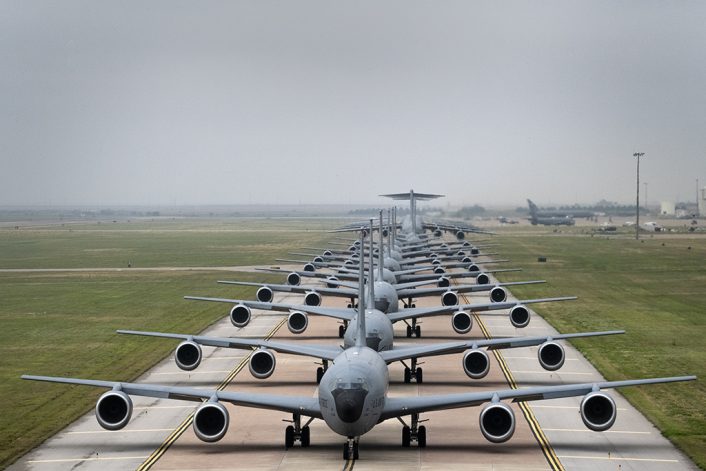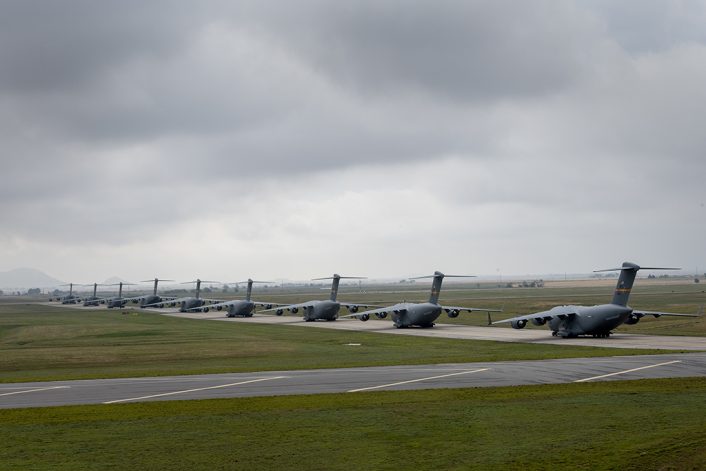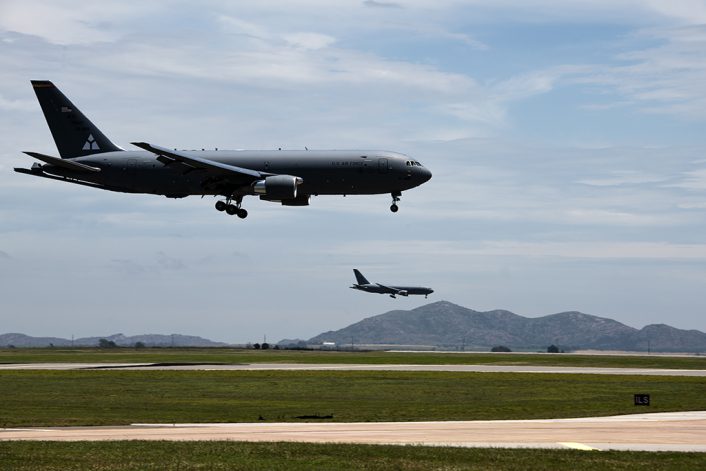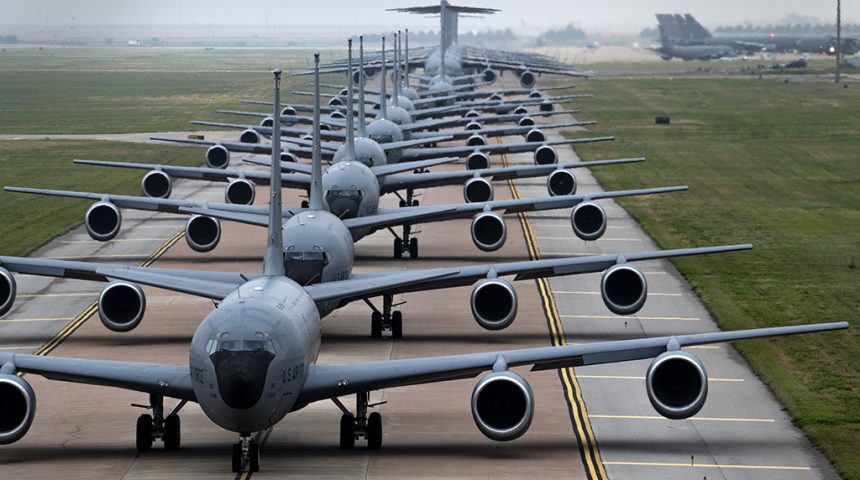The “Elephant Walk” was carried out as the aircraft prepared for a mass launch from Altus AFB.
10x KC-135 Stratotankers, 10x C-17 Globemaster IIIs and 4x KC-46 Pegasus aircraft belonging to the 97th Air Mobility Wing, performed an “Elephant Walk” during a large formation exercise at Altus Air Force Base, Oklahoma, on May 21, 2020. During the exercise, 24 aircraft from Altus AFB lined up and took off from the base to practice a large-scale evacuation. Altus AFB is located in Southwest Oklahoma and is prone to frequent severe weather events, which is why large formation exercises are important: in the event of a real-world severe weather event, an evacuation can take place with less delays.
“When a real-world event calls for the need to evacuate aircraft like severe weather, adversary actions, or any other extreme natural disasters, the decision is made by the base commander,” said U.S. Air Force Capt. Tyler George, the chief of wing plans assigned to the 97th Air Mobility Wing Inspector General’s office in a public release. “Real-world weather prediction is anywhere around three to four days and having a plan gives the base commander a timeline to execute his order.”

Generating multiple aircraft sorties can be a significant challenge for any flying unit. In fact, not all aircraft are available for the flying activity each day: some are involved in scheduled maintenance activities, others are grounded by minor or major issues while others on standby as spares. Then, there might not be enough aircrews to launch the aircraft, because of the working shifts, currencies, training activities, deployments, time-offs, etc.

According to Cliff Washington, the 97th Aircraft Maintenance Squadron deputy director, the evacuation exercise presented a unique task of generating more aircraft at the same time than usual. Though challenging, it is something that tested their ability to ensure readiness for real-world events.

“Maintenance on a daily basis is launching, recovering, and sending off aircraft throughout the day,” said Washington. “There are a lot of steps that go into the daily maintenance routine and essentially we are taking what we do throughout the day and performing it in a mass amount at the same time.”
To make the things harder (but also realistic in this period) maintainers had to consider the restrictions imposed by the recent COVID-19 pandemic.
“With the pandemic, we have been keeping a handle on the big three; social distance as (much as) possible, regularly washing hands and wearing masks when required to be within six feet of others,” he said. “It’s starting to become the ‘norm,’ but it’s hard with having a lot of tasks requiring two people. We have offset that with wearing masks, minimal touching, increased handwashing, and stressing the importance of staying home if someone is sick.”
Welcome to the “new normal”.
Anyway, we can’t but notice the presence of four of the new (and much troubled) KC-46 Pegasus tankers in the large formation exercise. The tanker that should replace the ageing KC-135s is plagued with serious issues. The latest, a Cat I deficiency (fuel system leakage) was announced at the end of March, nearly one month after the service said that it would not use its existing examples for aerial refueling, texcept in an absolute emergency, because of issues with the RVS (Remote Vision System).










